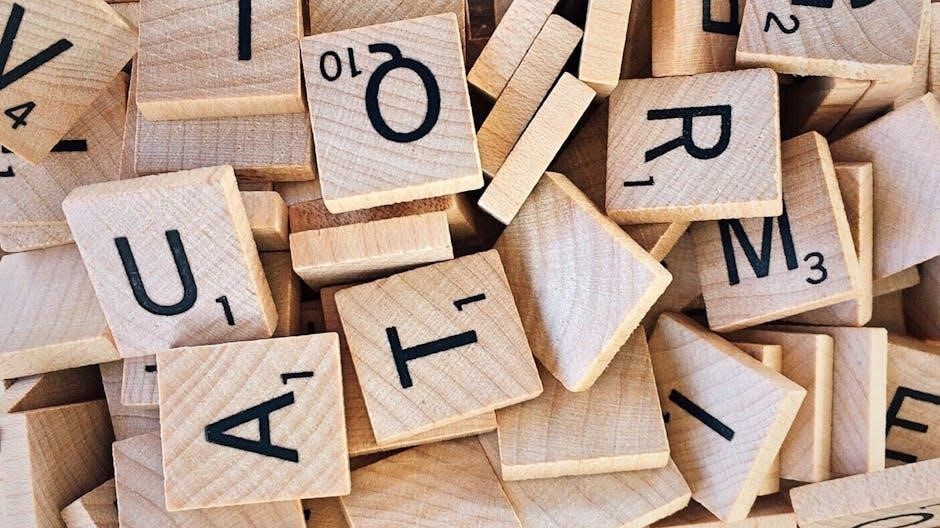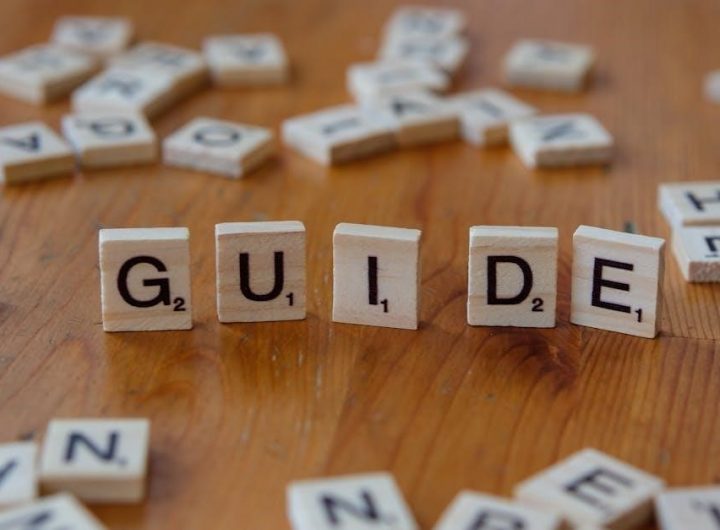
Tier 3 vocabulary consists of specialized, low-frequency words specific to academic disciplines. They are crucial for advanced understanding and are often taught explicitly to enhance reading comprehension.
1.1 Definition of Tier 3 Vocabulary
Tier 3 vocabulary refers to specialized, content-specific words that are highly relevant to particular academic disciplines or subjects. These words are low-frequency but high-utility, meaning they are not commonly used in everyday language but are essential for understanding complex concepts within specific fields. Unlike Tier 1 and Tier , Tier 3 vocabulary is discipline-specific and often requires explicit instruction. Examples include terms like “isosceles” in mathematics or “sonata” in music. These words are critical for building domain-specific knowledge and advancing students’ academic literacy, particularly in subjects like science, history, and literature.
1.2 Importance of Tier 3 Vocabulary in Education
Tier 3 vocabulary plays a critical role in education by providing students with the specialized language needed to engage with complex academic content. These words are essential for understanding subject-specific concepts and are often encountered in advanced texts. Mastering Tier 3 vocabulary enhances reading comprehension, particularly in disciplines like science, history, and literature. It also fosters critical thinking and the ability to communicate ideas effectively. Educators prioritize these words because they are integral to academic success, enabling students to access higher-level knowledge and participate in meaningful discussions. Explicit instruction of Tier 3 vocabulary is vital, as these terms are less likely to be encountered outside of specific contexts.
1.3 How Tier 3 Vocabulary Differs from Tier 1 and Tier 2
Tier 3 vocabulary differs significantly from Tier 1 and Tier . Tier are basic, high-frequency terms (e.g., “cat,” “run”) that are universally understood and rarely require instruction. Tier are high-frequency, multi-meaning words (e.g., “interpret,” “sequence”) that are useful across various contexts. In contrast, Tier are specialized, low-frequency terms specific to academic disciplines (e.g., “photosynthesis” in science or “isotope” in chemistry). Unlike Tiers 1 and 2, Tier 3 vocabulary is not encountered frequently in everyday language and requires explicit teaching to ensure comprehension and effective use in specific subject areas.

Characteristics of Tier 3 Vocabulary Words
Tier are specialized, low-frequency terms specific to academic disciplines, offering nuanced meanings that require explicit instruction and context for effective comprehension and application.
2.1 Low-Frequency but High-Utility Words
Tier 3 vocabulary words are characterized as low-frequency but high-utility, meaning they are not commonly encountered in everyday language but hold significant importance in specific academic contexts. These words are often discipline-specific and provide precise meanings that are essential for understanding complex concepts within a subject area. While they may not appear frequently across various texts, their utility lies in their ability to convey nuanced ideas that are critical for advanced learning; For example, words like “isosceles” in mathematics or “sonata” in music are rarely used in general conversation but are vital for mastery within their respective fields. Teaching these words explicitly is crucial, as they are unlikely to be learned through casual exposure, making them a focus for targeted instruction to enhance academic proficiency and comprehension.
2.2 Subject-Specific and Specialized Terminology
Tier 3 vocabulary words are highly specialized and specific to particular subjects or disciplines. Unlike general vocabulary, these words are tightly bound to the concepts and ideas of a specific field, such as science, mathematics, or literature; For example, terms like “photosynthesis” in biology or “sonata” in music are unique to their domains and are rarely encountered outside of them. These words are essential for understanding advanced ideas within a subject area and are often used by experts in their respective fields. They differ from general vocabulary in their narrow application and specialized meaning, making them critical for students to master in order to fully grasp and communicate complex concepts effectively.
2.3 Complexity and Nuance in Meaning
Tier 3 vocabulary words often possess complexity and nuance in their meanings, requiring a deeper understanding of context and connotation. These words are not typically learned through casual conversation but are instead encountered in academic or specialized texts. Their meanings can vary significantly depending on the subject area, making them context-dependent. For example, terms like “theme” in literature versus “theme” in music have distinct interpretations. This complexity demands careful instruction and explicit teaching to ensure students grasp both the literal and implied meanings. The nuanced nature of Tier makes them challenging but essential for advanced comprehension and communication in specific disciplines.

Identifying Tier 3 Vocabulary Words
Educators identify Tier by analyzing curriculum standards, focusing on low-frequency, high-utility terms specific to academic subjects, ensuring they align with learning objectives and disciplinary needs.
3.1 Criteria for Selecting Tier
Selecting Tier 3 vocabulary involves identifying words that are low-frequency but high-utility, often specific to academic disciplines. These words are typically unfamiliar to students but are crucial for understanding complex texts. Criteria include alignment with curriculum standards, relevance to subject-specific concepts, and the potential to enhance reading comprehension. Words should also have nuanced meanings or be essential for mastery within a discipline. Educators often prioritize words that are not commonly encountered in everyday language but are critical for academic success. The selection process ensures that Tier are both challenging and meaningful, making them worth explicit instruction and focused learning.
3.2 Tools and Resources for Identifying Tier 3 Vocabulary
Identifying Tier 3 vocabulary requires specialized tools and resources. Curriculum guides, academic texts, and subject-specific glossaries are essential for locating discipline-relevant words. Online databases and educational websites provide precompiled lists, such as the Tier 3 Vocabulary Word List for subjects like science and math. Teachers often use grade-level standards to determine high-utility words. Additionally, resources like spelling apps and vocabulary builders offer categorized lists. For example, the Scientific Method Vocabulary List for grades 3-5 and Maths Vocabulary Lists are widely used. These tools ensure educators select words that align with learning objectives and enhance disciplinary literacy.
3.3 Role of Curriculum and Standards in Selection
The curriculum and educational standards play a pivotal role in identifying Tier 3 vocabulary. These words are selected based on their relevance to specific academic disciplines and grade-level expectations. Curriculum guides and academic standards, such as the Next Generation Science Standards, highlight key terminology essential for mastery. Educators align word selection with learning objectives, ensuring vocabulary aligns with subject matter and skills. For example, the Scientific Method Vocabulary List for grades 3-5 includes terms like “hypothesis” and “experiment,” directly tied to science curriculum goals. This systematic approach ensures Tier are both academically meaningful and discipline-specific.

Teaching and Learning Tier 3 Vocabulary
Tier 3 vocabulary is explicitly taught through instructional strategies, reinforcing activities, and assessments. Explicit instruction ensures understanding, while interactive exercises like vocabulary maps deepen retention and application.
4.1 Instructional Strategies for Tier 3 Vocabulary
Teaching Tier 3 vocabulary involves explicit instruction, as these words are often unfamiliar and context-dependent. Strategies include pre-teaching vocabulary before lessons, using graphic organizers to visually connect meanings, and providing multiple exposures. Teachers can also incorporate word analysis, such as breaking down prefixes, suffixes, and roots, to enhance understanding. Additionally, real-world applications and connections to prior knowledge help students grasp nuanced meanings. Interactive activities, like vocabulary mapping and discussions, engage learners and promote deeper comprehension. Regular formative assessments ensure students retain and apply these specialized terms effectively in their respective subjects.
4.2 Activities to Reinforce Tier 3 Word Learning
Reinforcing Tier 3 vocabulary involves engaging activities that deepen understanding and retention. Vocabulary mapping allows students to visually connect words to concepts and examples. Word sorts and categorization games help students recognize relationships between terms. Discussions and debates using Tier encourage application in context. Writing activities, such as creating definitions or sentences, reinforce meaning. Real-world connections, like linking words to current events or projects, enhance relevance. Games like vocabulary charades or crossword puzzles make learning interactive and fun. These activities ensure students not only memorize but also effectively use and apply Tier 3 vocabulary in their learning.
4.3 Assessing Understanding of Tier 3 Vocabulary
Assessing Tier 3 vocabulary understanding involves evaluating students’ ability to apply and explain these specialized words. Quizzes and projects can measure retention and usage accuracy. Class discussions and debates encourage students to articulate meanings in context. Word maps and concept charts help visualize understanding. Performance tasks, like creating presentations or writing essays, demonstrate practical application. Regular formative assessments, such as exit tickets or quick writes, provide ongoing feedback. Summative assessments, like unit tests or portfolios, evaluate long-term mastery. These methods ensure students not only memorize Tier but also comprehend and effectively use them in academic settings.

Creating a Tier 3 Vocabulary List
A Tier 3 vocabulary list includes specialized, content-specific words critical for academic success. Examples like “pogrom” or “quagmire” are curated to align with curriculum standards and subject areas.
5.1 Steps to Develop a Tier 3 Vocabulary List
Developing a Tier 3 vocabulary list involves several strategic steps. First, identify content-specific words from curriculum documents or academic texts. Next, prioritize words based on their utility and relevance to the subject area. Utilize existing resources, such as PDF lists or educational websites, to gather high-quality terms. Align the list with learning standards and grade-level expectations to ensure applicability. Consider the difficulty level and ensure words are challenging yet achievable for students. Finally, organize the list by subject or theme and review it for accuracy and effectiveness. This process ensures the list is tailored to enhance disciplinary literacy and academic success.
5.2 Organizing Tier by Subject Area
Organizing Tier by subject area enhances their relevance and usability. Begin by categorizing words into specific disciplines, such as science, mathematics, or literature. Within each subject, further divide words by topics or themes to align with curriculum standards. For example, in science, words like “photosynthesis” or “isotope” can be grouped under biology or chemistry. Providing definitions and contextual examples for each word improves understanding. Additionally, creating cross-references between related subjects helps students see connections. Regularly updating the lists ensures they remain current and applicable to evolving educational needs. This structured approach makes Tier 3 vocabulary more accessible and effective for teaching and learning.

5.3 Examples of Tier 3 Vocabulary Across Disciplines
Tier 3 vocabulary includes discipline-specific words essential for advanced learning. In science, examples include photosynthesis and isotope. Mathematics features terms like parabola and hypotenuse. Literature includes symbolism and metaphor. History involves chronology and archeology. Technology uses algorithm and interface. These words are critical for understanding complex concepts and vary across subjects, making them vital for academic success. By providing clear examples, educators can tailor instruction to meet specific disciplinary needs, ensuring students grasp specialized terminology effectively.

Using Tier 3 Vocabulary Lists in the Classroom
Tier 3 vocabulary lists are essential for integrating specialized terminology into lessons, enhancing reading comprehension, and supporting students’ academic success across various subjects by differentiating instruction for diverse learners.
6.1 Integrating Tier into Lesson Plans
Integrating Tier 3 vocabulary into lesson plans involves explicit teaching of specialized terminology to enhance academic understanding. Teachers can incorporate these words through direct instruction, discussions, and contextual activities. For example, in science, introducing terms like “photosynthesis” or “isotope” helps students grasp complex concepts. Similarly, in literature, focusing on words like “parable” or “irony” deepens comprehension. By aligning Tier with curriculum standards and embedding them into lessons, educators ensure students encounter these terms repeatedly, fostering long-term retention and improving disciplinary literacy. This approach also supports differentiated instruction, catering to diverse learning needs.
6.2 Encouraging Independent Learning with Tier 3 Lists
Tier 3 vocabulary lists empower students to take ownership of their learning by providing targeted, subject-specific words. By sharing these lists, educators enable students to study independently, reinforcing their understanding of complex terminology. Strategies include creating vocabulary maps, where students link words to definitions and examples, and encouraging the use of flashcards or digital tools for self-paced review. Additionally, assigning reflective activities, such as writing sentences or identifying contexts, fosters deeper engagement. This approach not only builds autonomy but also ensures students are well-prepared for discipline-specific challenges, making independent learning both effective and meaningful.
6.3 Differentiating Instruction with Tier 3 Vocabulary
Differentiating instruction with Tier 3 vocabulary involves tailoring teaching methods to meet the diverse needs of students. Educators can scaffold learning by providing visual aids, graphic organizers, and tiered activities that align with curriculum standards. For advanced learners, offering complex Tier can deepen subject knowledge, while struggling students may benefit from foundational support. Flexible grouping strategies, such as small groups or paired work, allow for targeted instruction. Incorporating technology, like interactive vocabulary apps, also engages students and supports varied learning styles. By leveraging Tier 3 lists, teachers can create personalized learning paths, ensuring all students access the specialized language needed for academic success.

The Role of Tier 3 Vocabulary in Reading Comprehension
Tier 3 vocabulary enhances reading comprehension by providing students with the specialized language needed to understand complex academic texts and concepts in their subjects.
7.1 Enhancing Reading Comprehension with Tier
Tier 3 vocabulary plays a critical role in enhancing reading comprehension, particularly in academic texts. These specialized words provide precise meanings essential for understanding complex concepts within specific subjects. By mastering Tier , students gain access to nuanced ideas that are central to disciplinary knowledge. For instance, in science, terms like “photosynthesis” or “isotope” are vital for comprehending key principles. Explicit teaching of these words, along with their contexts, helps students decode and interpret challenging texts more effectively. This targeted instruction not only improves reading skills but also strengthens overall academic performance, as Tier 3 vocabulary is often a gateway to deeper understanding and analytical thinking.
7.2 Strategies to Teach Tier 3 Vocabulary in Context
Teaching Tier 3 vocabulary in context is essential for helping students understand and retain specialized words. One effective strategy is to embed these words within relevant texts or discussions, allowing students to see their practical application. Vocabulary maps and concept diagrams can visually connect words to broader concepts, enhancing comprehension. Providing sentence frames or examples that highlight the word’s meaning in a specific subject area also supports learning. Additionally, encouraging students to use Tier in their own writing or discussions reinforces their understanding. By grounding instruction in authentic contexts, educators help students grasp the nuances of these specialized terms and apply them effectively in academic settings.
7.3 The Impact of Tier 3 Vocabulary on Academic Success
Tier 3 vocabulary plays a significant role in academic success, particularly in advanced coursework and specialized subjects. These low-frequency, high-utility words are critical for understanding complex texts and concepts in disciplines like science, literature, and mathematics. Mastery of Tier 3 vocabulary enhances reading comprehension, enabling students to engage deeply with academic materials. It also prepares learners for high-stakes assessments and post-secondary education, where such terminology is frequently used. By acquiring these specialized words, students gain a competitive edge in their studies, as they are better equipped to interpret and analyze subject-specific content effectively. This proficiency fosters intellectual growth and long-term academic achievement.

Tier 3 Vocabulary and Disciplinary Literacy
Tier 3 vocabulary is essential for disciplinary literacy, enabling students to engage deeply with subject-specific texts and concepts, thereby enhancing their academic comprehension and analytical skills.
8.1 The Connection Between Tier 3 Vocabulary and Disciplinary Literacy
Tier 3 vocabulary is deeply intertwined with disciplinary literacy, as it represents the specialized language unique to specific academic fields. These words are critical for understanding complex texts and concepts within disciplines like science, history, or literature. Disciplinary literacy requires students to master subject-specific terminology to engage effectively with content. Tier , being low-frequency but high-utility, are essential for advanced comprehension and analytical thinking. They enable students to participate in academic discussions and apply knowledge across varied contexts. Thus, the explicit teaching of Tier 3 vocabulary is vital for fostering expertise and fluency in disciplinary literacy, ensuring students can communicate and think critically within their chosen fields.
8.2 Building Domain-Specific Knowledge with Tier

Tier are essential for constructing domain-specific knowledge, as they represent the unique terminology of specific academic disciplines. These specialized words enable students to understand and communicate complex ideas within their field of study. By mastering Tier 3 vocabulary, learners gain deeper insights into subject matter, enhancing their ability to analyze and apply knowledge effectively. Explicit instruction of these words ensures students can engage with discipline-specific texts and discussions, fostering expertise and fluency in their chosen domains. This targeted approach to vocabulary development is crucial for academic success, particularly in advanced or specialized fields.
8.3 Supporting Students in Specialized Fields
Tier 3 vocabulary plays a critical role in supporting students in specialized fields by providing the precise language needed for advanced understanding. These words are often unique to specific disciplines, enabling learners to communicate complex ideas effectively. Explicit instruction of Tier ensures students can engage with subject-specific texts and discussions. Activities such as vocabulary mapping and categorization help students build connections between words and concepts. By mastering these specialized terms, students gain the tools to analyze and apply knowledge within their field, fostering deeper comprehension and expertise. This targeted approach is essential for helping students succeed in specialized academic and professional domains.
Tier 3 vocabulary is crucial for advanced learning, offering specialized terms that enhance reading comprehension and subject-specific communication. Explicit teaching ensures students master these high-utility words, essential for academic success.
9.1 Summary of Key Points
Tier 3 vocabulary consists of specialized, low-frequency words specific to academic disciplines, crucial for advanced understanding. These words are explicitly taught to enhance reading comprehension and subject-specific communication. Key characteristics include high utility, nuanced meanings, and relevance to specific fields. They play a vital role in curriculum design and disciplinary literacy, enabling students to engage deeply with complex texts. Effective strategies for teaching Tier 3 vocabulary involve explicit instruction, contextual learning, and repeated exposure. Assessing understanding ensures mastery, while connecting these words to broader concepts enhances academic success. By focusing on Tier 3 vocabulary, educators equip students with essential tools for lifelong learning and intellectual growth.
9.2 Final Thoughts on the Importance of Tier 3 Vocabulary
Tier 3 vocabulary is indispensable for fostering advanced academic communication and critical thinking. These specialized words bridge gaps between disciplines, enabling students to engage deeply with complex texts and concepts. By prioritizing Tier 3 vocabulary, educators empower learners with precise language tools, enhancing both disciplinary literacy and overall academic success. As students master these words, they gain access to higher levels of intellectual discourse, preparing them for lifelong learning and specialized fields. Teachers play a pivotal role in identifying and teaching these words, ensuring students are well-equipped to navigate the demands of rigorous academic environments and excel in their educational journeys.
 valentía 2 libro pdf descargar gratis
valentía 2 libro pdf descargar gratis  lhsaa handbook pdf
lhsaa handbook pdf  schematic solar panel wiring diagram pdf
schematic solar panel wiring diagram pdf  ions worksheet answer key pdf
ions worksheet answer key pdf  the last castle jack vance pdf
the last castle jack vance pdf  ap world history textbook pdf
ap world history textbook pdf  scag freedom z owners manual
scag freedom z owners manual  instructions for mobi thermometer
instructions for mobi thermometer  guiding light alan spaulding
guiding light alan spaulding